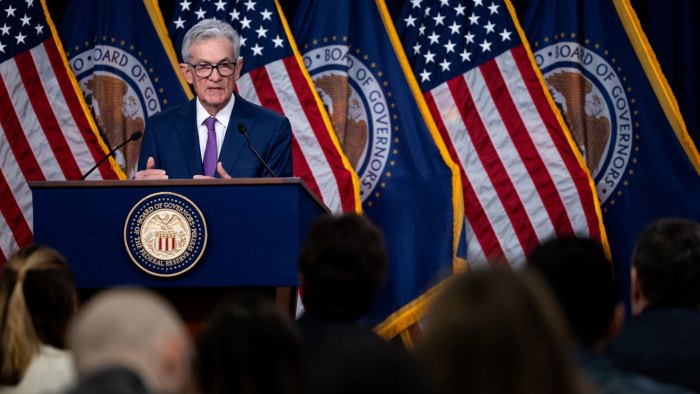The Fed's FOMC minutes preserved a positive interest rate advantage for the US dollar while curbing its movement ahead of today's PMI data release.
The minutes of the January 30-31 FOMC meeting revealed that there is still thick uncertainty about how long the Federal Funds Rate (FFR) should remain at its current level of 5.25%-5.50%. However, most meeting participants were more concerned about the risk of rates falling too fast than the risk of rates going too high.

The FOMC minutes released in the early hours of this morning stated, "Most participants highlighted the risks of acting too quickly to ease the stance of policy". Meanwhile, "(only) a handful...mentioned the downside risks to the economy associated with (maintaining) an overly restrictive (policy) stance for too long."
Some of the risks included the fragility of the US financial system, the risk of a collapse in commercial real estate prices, and the possibility that the decline in inflation would take longer than previously expected. Fed officials argue that efforts to achieve the 2% inflation target will be hampered if economic performance remains as strong as it is now, so policy should remain restrictive.
Market participants think the minutes emphasize the impression that the Fed does not want to rush to lower interest rates. On the one hand, the Fed's stance preserves the interest rate advantage which is positive for the US dollar. On the other hand, it risks "slowing the pace of real activity" further.
"It is clear that the message from the minutes, coupled with Fed speakers out in force, is that they are concerned about moving too quickly, before they declare a final victory in quelling inflation. Given the uptick in prices, the Fed's concerns appear valid," said Quincy Krosby, chief global strategist at LPL Financial.
Ahead of the release of the Purchasing Managers' Index (PMI) in the next few hours, that market perception curbed the US dollar's movement against various other majors. The US Dollar Index (DXY) was stuck in the 103.90s in the Asian session on Thursday (22/February). GBP/USD rested at 1.2637, EUR/USD edged up to 1.0827, while USD/JPY continued to circulate in the 150.40s.
"A glance at the composite PMIs for the U.S., Europe and the UK show that they're either expanding at a faster pace or slowing at a diminishing rate," said Matt Simpson, senior market analyst at City Index. "That warns of upside pressure for growth and inflation - which ties back into the 'higher-for-longer' narrative that traders don't want to hear."

 Dedicated FREE FOREX VPS
Dedicated FREE FOREX VPS Free FOREX Virtual Private Server
Free FOREX Virtual Private Server MT4 Demo Contest, Get $500
MT4 Demo Contest, Get $500 Sign Up for an Account, Claim 60% Deposit Bonus
Sign Up for an Account, Claim 60% Deposit Bonus Free MT4/MT5 VPS 2024
Free MT4/MT5 VPS 2024 Send E-mail and Get Free Merchandise
Send E-mail and Get Free Merchandise $1K Refer a Friend Bonus for Pepperstone Pro clients
$1K Refer a Friend Bonus for Pepperstone Pro clients Maximize Your Earnings with 100% Deposit bonus
Maximize Your Earnings with 100% Deposit bonus Trade to Win, $5,000 Monthly Demo Contest
Trade to Win, $5,000 Monthly Demo Contest Claim 30% + 15% Deposit Bonus from LiteFinance
Claim 30% + 15% Deposit Bonus from LiteFinance






